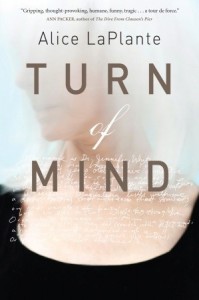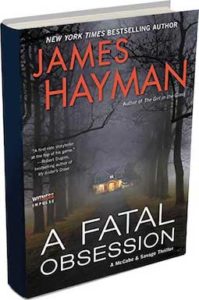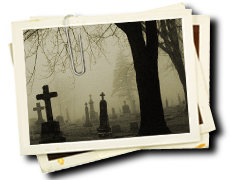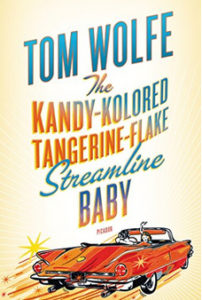
Journalist, novelist and lifelong iconoclast, Tom Wolfe, died this month at the age of eighty-eight. Both well loved and well hated , Wolfe has always one of my favorite authors ever since I dipped into his first book, “The Kandy-Kolored Tangerine-Flake Streamline Baby.” Way back in what I like to think of as my infancy as a writer, Wolfe blew my mind with his the rat-tat-tat, machine gun like prose that was unlike anything else I had ever read. To me it was all totally new and totally wonderful.
Wolfe was one of the first, if not the very first, practitioner of what came to be called “The New Journalism,” a style that treated non-fiction profiles and news stories with what I can only describe as utter abandon. As the online blog “The Agency” puts it, it’s “Wolfe’s distinctive (though here, nascent) style that ties the book together. A style that uses onomatopoeia, sound effects, creative punctuation, wordplay, obscure vocabulary and purple flights of linguistic acrobatics to tell his stories.”
Here for your pleasure or perhaps confusion is how Wolfe opened the first of his essays in the Kandy-Colored Tangerine:
“Chapter 1
Las Vegas (What?) Las Vegas (Can’t hear you! Too noisy) Las Vegas!!!!
HERNIA, HERNIA, HERNIA, HERNIA, HERNIA, HERNIA, HERNIA, hernia, hernia, hernia, hernia, hernia, hernia, HERNia; hernia, HERNia, hernia, hernia, hernia, hernia, HERNia, HERNia, HERNia; hernia, hernia, hernia, hernia, hernia, hernia, hernia, eight is the point, the point is eight; hernia, hernia, HERNia; hernia, hernia, hernia, hernia, all right, hernia, hernia, hernia, hernia, hard eight, hernia, hernia, hernia, HERNia, hernia, hernia, hernia, HERNia, hernia, hernia, hernia, HERNia, hernia, hernia, hernia, hernia
“What is all this hernia hernia stuff?” This was Raymond talking to the wavy-haired fellow with the stick, the dealer, at the craps table about 3:45 Sunday morning. The stickman had no idea what this big wiseacre was talking about, but he resented the tone. He gave Raymond that patient arch of the eyebrows known as a Red Hook .”
As far as I was concerned Wolfe had to have the kind of cojones one has to admire to submit writing like this to an editor. Nonetheless he did and nonetheless it was published. Famed novelist and fellow iconoclast, Norman Mailer once wrote of Wolfe that, despite his staccato style, his “Extraordinarily good writing forces one to contemplate the uncomfortable possibility that Tom Wolfe might yet be seen as our best writer…”
Born in 1930 to a wealthy Virginia family, Thomas Wolfe was educated at a private boys school in Richmond and graduated cum laude from Washington and Lee University. Despite his foppish appearance, he was an excellent athlete. The best pitcher on his college baseball team, Wolfe was good enough to earn a tryout with the old New York Giants. Happily for his future readers, he wasn’t signed and dreams of a baseball career vanished.
After college, instead of going to the Polo Grounds, Wolfe honed his writing skills at the old New York Herald Tribune and after the Trib’s demise he kept on writing for its lone surviving progeny, Clay Felker’s New York Magazine. The Kandy-Kolored Tangerine Flake Streamline Baby was published in 1965.
Wolfe went on to become world famous, and is best known for two of his subsequent books. The first was “The Right Stuff,” published in 1979. “The Right Stuff” was a masterful depiction of America’s historic journey into space starting with profiles of early test pilots like Chuck Yaeger and going on to the seven astronauts who were chosen for Project Mercury, the first manned space flight by the United States. The Right Stuff was made into a memorable movie which was nominated for nine and won four Academy Awards.
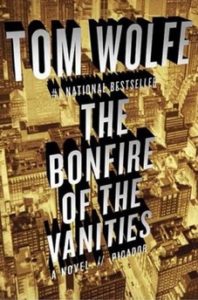 Wolfe published his first novel “Bonfire of the Vanities,” in 1987. The New York Times describes it as “a sweeping, bitingly satirical picture of money, power, greed and vanity in New York during the shameless excesses of the 1980s.” “Bonfire of the Vanities” is my favorite Wolfe book. I’ve already read it twice and now that Wolfe is gone I plan to read it again. There is no question in my mind it has influenced my own depictions of vain and shallow, greed is good rich people (“Masters of the Universe”) who show up from time to time in my own McCabe/Savage suspense thrillers.
Wolfe published his first novel “Bonfire of the Vanities,” in 1987. The New York Times describes it as “a sweeping, bitingly satirical picture of money, power, greed and vanity in New York during the shameless excesses of the 1980s.” “Bonfire of the Vanities” is my favorite Wolfe book. I’ve already read it twice and now that Wolfe is gone I plan to read it again. There is no question in my mind it has influenced my own depictions of vain and shallow, greed is good rich people (“Masters of the Universe”) who show up from time to time in my own McCabe/Savage suspense thrillers.
And please don’t forget to look for my latest McCabe/Savage thriller, A Fatal Obsession, coming out on August 21st and available for preorder now!
Follow me on Twitter or Facebook for more details!
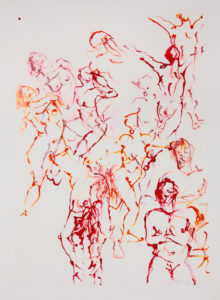
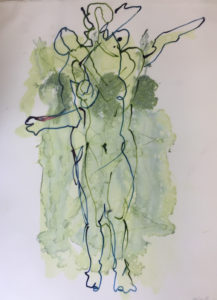 Those of you who’ve read my first McCabe Savage thriller, The Cutting, know McCabe’s girlfriend at the time was the talented artist Kyra Erikson. Guess where I got the idea for and the background info to create that character? Anyway, Kyra had left McCabe by the end of the third book, Darkness First, obviously to allow his relationship with Maggie to blossom. Happily, Jeanne’s still with me.
Those of you who’ve read my first McCabe Savage thriller, The Cutting, know McCabe’s girlfriend at the time was the talented artist Kyra Erikson. Guess where I got the idea for and the background info to create that character? Anyway, Kyra had left McCabe by the end of the third book, Darkness First, obviously to allow his relationship with Maggie to blossom. Happily, Jeanne’s still with me.
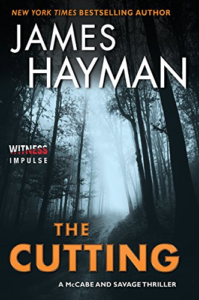
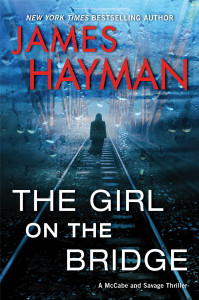
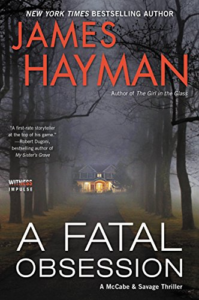


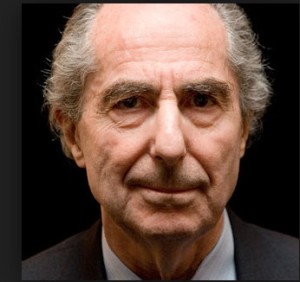

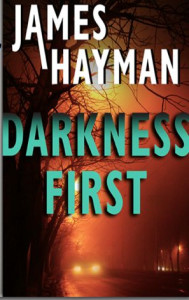 Darkness First is the first novel in the McCabe/Savage series to feature Detective Maggie Savage, McCabe’s partner, as the key protagonist. Most of the story is told from her point of view. As a male writer I wanted to try writing a novel primarily from a female point of view which turned out to be interesting, especially when it came to describing the sex scenes. The book is also the first of the series that takes place primarily outside of Portland.
Darkness First is the first novel in the McCabe/Savage series to feature Detective Maggie Savage, McCabe’s partner, as the key protagonist. Most of the story is told from her point of view. As a male writer I wanted to try writing a novel primarily from a female point of view which turned out to be interesting, especially when it came to describing the sex scenes. The book is also the first of the series that takes place primarily outside of Portland.
